Welcome to our free classical music site

Do you write about classical music? Are you a blogger? Want to team up with Classical Connect? Send us a message, let's talk!

Do you write about classical music? Are you a blogger? Want to team up with Classical Connect? Send us a message, let's talk!
March 7, 2016. Gesualdo. Today is the birthday of Maurice Ravel, a perennial favorite of our listeners and performers (we have more than 130 recordings of Ravel in our library). Ravel was born in 1875. Here’s his Sonatine, which he wrote for a competition sponsored by the magazine Weekly Critical Review. The rules of the competition called for just the first movement of a piano Sonatine and stipulated that the movement should be no more than 75 bars long. Ravel’s was several bars longer, and even though he was the only entrant, he was disqualified. Soon after the magazine went bankrupt but, fortunately for us, two years later Ravel completed the piece. Sonatine is performed live by the young Russian pianist Denis Evstuhin.
Carl Philipp Emanuel Bach, the fifth son of Johann Sebastian Bach and the second oldest to survive into adulthood, was born on March 8th of 1714. He’s mostly famous for his symphonies and keyboard sonatas (Mozart said “Bach is the father, we are the children,” and he was referring to C.P.E., not J.S.). Bach also wrote several oratorios. Probably the most interesting one is Die Israeliten in der Wüste (The Israelites in the Desert), written in 1768-69. Even though it’s styled after Handel’s Messiah, it’s full of original and interesting music. Here’s the introductory chorus, it’s performed by the Stuttgart chamber chorus and orchestra, Frieder Bernius conducting.
The composer to whom we’d like to pay special attention today is Carlo Gesualdo. Gesualdo,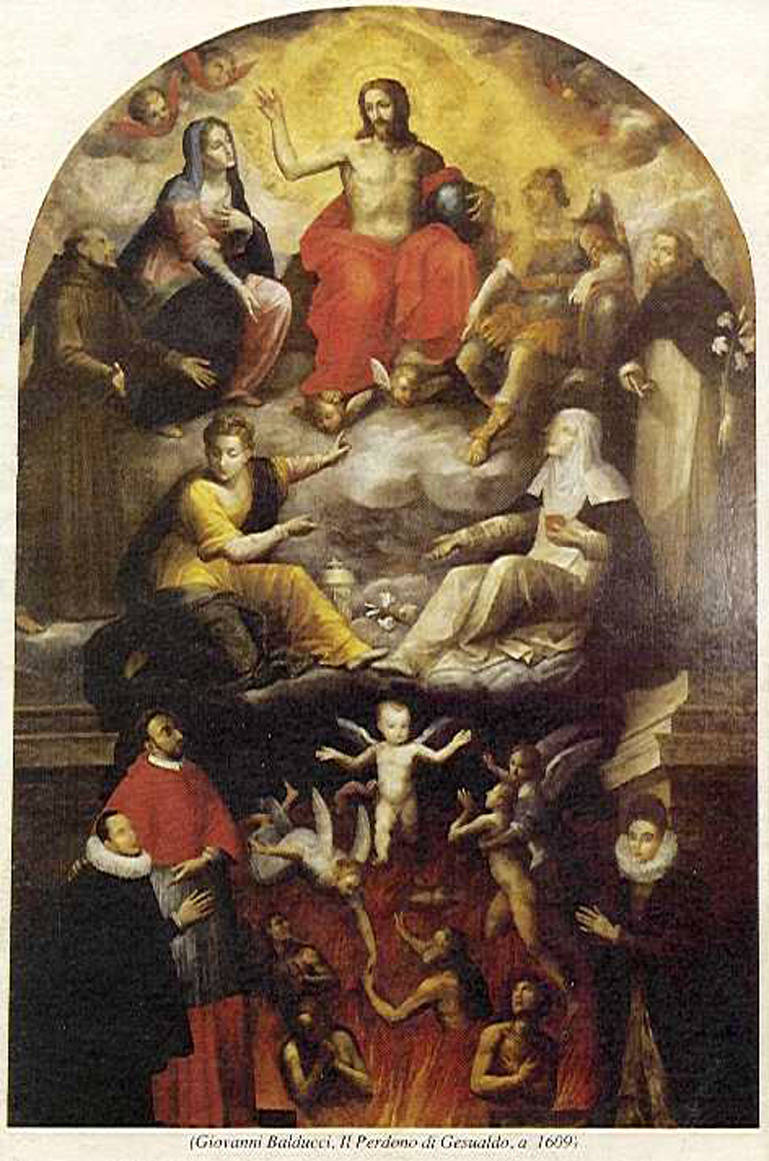 Prince of Venosa, Count of Conza, was born on March 8th of 1566. Even though the family castle was in Gesualdo, he was born in Venosa, then part of the kingdom of Naples and it was in that great city that he spent much of his time. In 1586 he married his cousin Maria d’Avalos, daughter of the Marquis of Pescara. Two years later Maria started an affair with Fabrizio Carafa, the Duke of Andria. In 1590, Gesualdo found Maria and her lover in flagrante, and killed them both on the spot. Such honor killings were customary, and the court found Gesualdo innocent. Still he decided to leave Naples and retired to Venosa. In 1594 he visited Ferrara, then one of the music centers of Italy. The Duke Alfonso II d'Este was a famous patron of the arts (Torquato Tasso spent several years at his court). During his visit Gesualdo arranged a marriage to Alfonso’s niece, Leonora d’Este. It seems Gesualdo was more interested in meeting the court composer Luzzasco Luzzaschi, one of the leading composers of the time, then his wife (the marriage was an unhappy one). After marrying Leonora, he sent her to his castle in Gesualdo while staying behind in Ferrara; he spent most of the next two years in the city. It was in Ferrara that Gesualdo published his first book of madrigals. On many occasions his contemporaries commented on Gesualdo’s obsessive passion for music. While first considered an amateur, Gesualdo soon acquired the reputation of a highly inventive composer, especially after publishing the third and fourth books of madrigals in 1594 and 1595. In his later years Gesaldo grew “melancholic” (today he would have probably been diagnosed with depression). He took a mistress who practiced witchcraft, stayed aloof and only kept the company of a few of his courtiers. But he continued to compose, creating some of the most extraordinary music. The last two books of madrigals, Books Five and Six appeared in 1611. We’ll hear two examples of Gesualdo’s chromatic inventiveness, both from Book Six: the first one, Se la mia morte brami (here) and Ancide sol la morte, no. 15 (here). They’re performed by Ensemble Métamorphoses under the direction of Maurice Bourbon.
Prince of Venosa, Count of Conza, was born on March 8th of 1566. Even though the family castle was in Gesualdo, he was born in Venosa, then part of the kingdom of Naples and it was in that great city that he spent much of his time. In 1586 he married his cousin Maria d’Avalos, daughter of the Marquis of Pescara. Two years later Maria started an affair with Fabrizio Carafa, the Duke of Andria. In 1590, Gesualdo found Maria and her lover in flagrante, and killed them both on the spot. Such honor killings were customary, and the court found Gesualdo innocent. Still he decided to leave Naples and retired to Venosa. In 1594 he visited Ferrara, then one of the music centers of Italy. The Duke Alfonso II d'Este was a famous patron of the arts (Torquato Tasso spent several years at his court). During his visit Gesualdo arranged a marriage to Alfonso’s niece, Leonora d’Este. It seems Gesualdo was more interested in meeting the court composer Luzzasco Luzzaschi, one of the leading composers of the time, then his wife (the marriage was an unhappy one). After marrying Leonora, he sent her to his castle in Gesualdo while staying behind in Ferrara; he spent most of the next two years in the city. It was in Ferrara that Gesualdo published his first book of madrigals. On many occasions his contemporaries commented on Gesualdo’s obsessive passion for music. While first considered an amateur, Gesualdo soon acquired the reputation of a highly inventive composer, especially after publishing the third and fourth books of madrigals in 1594 and 1595. In his later years Gesaldo grew “melancholic” (today he would have probably been diagnosed with depression). He took a mistress who practiced witchcraft, stayed aloof and only kept the company of a few of his courtiers. But he continued to compose, creating some of the most extraordinary music. The last two books of madrigals, Books Five and Six appeared in 1611. We’ll hear two examples of Gesualdo’s chromatic inventiveness, both from Book Six: the first one, Se la mia morte brami (here) and Ancide sol la morte, no. 15 (here). They’re performed by Ensemble Métamorphoses under the direction of Maurice Bourbon.
The picture by Giovanni Balducci, above, was commissioned by Gesualdo in 1609. It depicts, in the low row, him standing next to the Cardinal Carlo Borromeo, his uncle, who was to be canonized the following year, and Leonora on the far right.Permalink
February 29, 2016. Chopin, Rossini, Vivaldi. These are the composers born this week: Gioachino Rossini, the epitome of the bel canto – on February 29th of 1792, Frédéric Chopin, one of the greatest, if not the greatest Romantic composers – on March 1st of 1810, and Antonio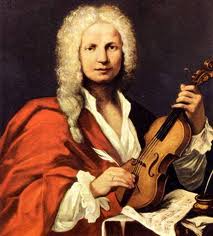 Vivaldi, who occupied a similar position within the Baroque tradition – on March 4th of 1678. We don’t have enough space to celebrate them all but omitting any one of them would be a fault, so we’ll be brief. Vivaldi, the oldest of the three, was born in Venice, one of the centers of European music. Vivaldi’s father, a barber-cum-violinist, was his first music teacher. At the age of 15 Antonio started his training for priesthood at local churches; he was ordained 10 years later. Vivaldi had health issues – probably asthma – and stopped celebrating Mass (and thus lost part of his income) several years into his priesthood. In 1703 Vivaldi became maestro di violino at Pio Ospedale della Pietà, a Venetian orphanage which specialized in the musical training of children in its care. It maintained a well-regarded orchestra and a choir. Musical services at the Pietà were popular among the Venetian nobility, and required continuous supply of new music, providing which was one of Vivaldi’s responsibilities. In 1711, Estienne Roger of Amsterdam published Vivadli’s set of 12 concerti, for one, two and four violins. It was called L'Estro Armonico, op. 3 and was dedicated to Grand Prince Ferdinand of Tuscany (the Prince, the son of Cosimo III de' Medici, Grand Duke of Tuscany, was a famous patron of music; among the musicians who benefited from his largess were Alessandro and Domenico Scarlatti, Benedetto Marcello, and George Frideric Handel). L'Estro Armonico was a huge success, especially in Germany, so much so that Bach transcribed six of the concertos: three for the keyboard, two for the organ and one, Concerto no 10, for four harpsichords and strings. Here’s the “original” Concerto no. 3, op. 3 for solo violin. The Academy of Ancient Music is led by Christopher Hogwood.
Vivaldi, who occupied a similar position within the Baroque tradition – on March 4th of 1678. We don’t have enough space to celebrate them all but omitting any one of them would be a fault, so we’ll be brief. Vivaldi, the oldest of the three, was born in Venice, one of the centers of European music. Vivaldi’s father, a barber-cum-violinist, was his first music teacher. At the age of 15 Antonio started his training for priesthood at local churches; he was ordained 10 years later. Vivaldi had health issues – probably asthma – and stopped celebrating Mass (and thus lost part of his income) several years into his priesthood. In 1703 Vivaldi became maestro di violino at Pio Ospedale della Pietà, a Venetian orphanage which specialized in the musical training of children in its care. It maintained a well-regarded orchestra and a choir. Musical services at the Pietà were popular among the Venetian nobility, and required continuous supply of new music, providing which was one of Vivaldi’s responsibilities. In 1711, Estienne Roger of Amsterdam published Vivadli’s set of 12 concerti, for one, two and four violins. It was called L'Estro Armonico, op. 3 and was dedicated to Grand Prince Ferdinand of Tuscany (the Prince, the son of Cosimo III de' Medici, Grand Duke of Tuscany, was a famous patron of music; among the musicians who benefited from his largess were Alessandro and Domenico Scarlatti, Benedetto Marcello, and George Frideric Handel). L'Estro Armonico was a huge success, especially in Germany, so much so that Bach transcribed six of the concertos: three for the keyboard, two for the organ and one, Concerto no 10, for four harpsichords and strings. Here’s the “original” Concerto no. 3, op. 3 for solo violin. The Academy of Ancient Music is led by Christopher Hogwood.
Gioachino Rossini composed 39 operas, among them some of the most beloved in all of the Italian repertoire, such as Il barbiere di Siviglia, La Cenerentola and William Tell. This achievement looks extraordinary if we consider that Rossini retired from active composing at the age of 37. Rossini didn’t “invent” bel canto, but he was the first, ahead of Bellini and Donizetti, to create great bel canto roles. The major exponents of the 18-century bel canto style were castrati; Farinelli was probably the most famous singer of the 18th century. It’s said that in 1720s and 1730s almost 4,000 pre-pubescent boys were castrated annually. By the early 19th century few of them remained on stage, but Rossini was greatly influenced by their singing. He said, “I have never forgotten them. The purity, the miraculous flexibility of those voices and, above all, their profoundly penetrating accent — all that moved and fascinated me more than I can tell.” He created a role for Giovanni Veluti, the "last of the great castrati," in his opera Aureliano in Palmira. Rossini’s wife, the famous soprano Isabella Colbran, shared the stage with Veluti in several productions. Colbran herself premiered many of Rossini’s operas, Semiramide, written in 1823 was one of them. Here’s is one of the greatest bel canto sopranos of the 20th century, Joan Sutherland, in the aria Bel raggio lusinghier in the 1960 production of Semiramide. The orchestra of the Covent Garden Opera is conducted by Francesco Molinari-Pradelli.
We’ll celebrate Chopin’s birthday by just one piece, and keeping with the theme of this post, it’s Italian in style. Barcarolle, op. 60 was written in 1846. His health was already deteriorating (Chopin died of tuberculosis on October 17th of 1849) and this was his last relatively large composition. He also played barcarolle in his last public concert in February of 1848 (it’s said that he was so weak that practically the whole concert was played in pianissimo). Here it is performed, with magnificent restraint, by Arthur Rubinstein. Permalink
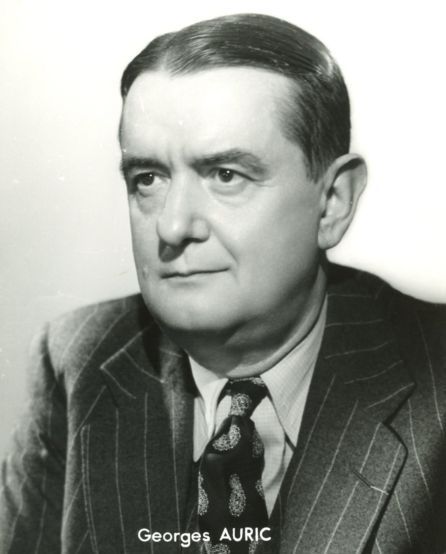 There are several other composers of note who have their birthdays around this date. One of them is the French composer and member of Les Six, Georges Auric. Auric was born in Lodève, a small town in the southwestern part of France, on February 15th of 1899. His family moved to the nearby Montpellier, where Auric attended the conservatory. He studied piano and was introduced to the music of Debussy, Ravel and Stravinsky. He also discovered the music of Satie, which later would become such an influence both on him and his friends. In 1913 his family moved Paris and Georges enter the Conservatory, where he studied with Florant Schmitt and Albert Roussel. When Georges was just 15, he got acquainted with many of the Parisian luminaries: Stravinsky, Apollinaire, Cocteau, Braque and Picasso. At the Conservatory, he met Arthur Honegger, Darius Milhaud and Germaine Tailleferre, all of whom eventually became associated with Les Six. (The group was the brain-child of Eric Satie, who wanted to organize musicians opposed to the music of Wagner and rebelled against the Impressionists. Satie came up with the idea after a concert in a private studio in Montparnasse in 1917. For that amazing concert, the walls were covered with pictures by Picasso, Matisse, Léger and Modigliani. The music that was performed was by Erik Satie himself, Honegger, Auric and Louis Durey). In the 1924, Serge Diagilev asked Auric to remake his incidental music to Molière’s comedy Les Fâcheux into a ballet. The ballet was successful and several other commissions followed, some from Diagilev, others from Ida Rubinstein. He also wrote music for several movies, including 1952 “Moulin Rouge,” with the song “Where is my heart,” which made it to no. 1 on the Billboard chart in 1953. But Auric remained a serious, probing composer throughout his career; in the 1960s and 1970s he even tried out serialism. Auric died on July 23rd of 1983. Here’s his Sonatine from 1922. It’s performed by the pianist Daniel Blumenthal.
There are several other composers of note who have their birthdays around this date. One of them is the French composer and member of Les Six, Georges Auric. Auric was born in Lodève, a small town in the southwestern part of France, on February 15th of 1899. His family moved to the nearby Montpellier, where Auric attended the conservatory. He studied piano and was introduced to the music of Debussy, Ravel and Stravinsky. He also discovered the music of Satie, which later would become such an influence both on him and his friends. In 1913 his family moved Paris and Georges enter the Conservatory, where he studied with Florant Schmitt and Albert Roussel. When Georges was just 15, he got acquainted with many of the Parisian luminaries: Stravinsky, Apollinaire, Cocteau, Braque and Picasso. At the Conservatory, he met Arthur Honegger, Darius Milhaud and Germaine Tailleferre, all of whom eventually became associated with Les Six. (The group was the brain-child of Eric Satie, who wanted to organize musicians opposed to the music of Wagner and rebelled against the Impressionists. Satie came up with the idea after a concert in a private studio in Montparnasse in 1917. For that amazing concert, the walls were covered with pictures by Picasso, Matisse, Léger and Modigliani. The music that was performed was by Erik Satie himself, Honegger, Auric and Louis Durey). In the 1924, Serge Diagilev asked Auric to remake his incidental music to Molière’s comedy Les Fâcheux into a ballet. The ballet was successful and several other commissions followed, some from Diagilev, others from Ida Rubinstein. He also wrote music for several movies, including 1952 “Moulin Rouge,” with the song “Where is my heart,” which made it to no. 1 on the Billboard chart in 1953. But Auric remained a serious, probing composer throughout his career; in the 1960s and 1970s he even tried out serialism. Auric died on July 23rd of 1983. Here’s his Sonatine from 1922. It’s performed by the pianist Daniel Blumenthal.
February 22, 2016. Auiric and Kurtág. By any count this should’ve been the week of George Frideric Handel, who was born on 23rd of February in 1685, but we’ve written about him many times (here and here, for example), so today we’ll mark his anniversary by playing the aria Ombra mai fu from his opera Xerxes. The magnificent Cecilia Bartoli is accompanied by Il Giardino Armonico, Giovanni Antonini conducting.
We’d also like to mention another 20th century composer, the Hungarian György Kurtág, who was born on February 19th of 1926 in Lugoj, Banat. These days most of the historical Banat lies in Romania, but prior to 1918 Banat was part of the Austro-Hungarian empire; many inhabitants were Hungarian-speakers. It also had a large Jewish population; Kurtág is half-Jewish. He spoke Hungarian at home and Romanian at school. As a child, he studied the piano on and off, first with his mother, then with professional teachers. After WWII, in 1946, the 20-year old Kurtág moved to Budapest and continued taking piano lessons, eventually entering the Franz Liszt Music Academy. There he met György Ligeti and they became friends for life. After the Hungarian revolution of 1956, Kurtág moved to Paris. There he studied with Olivier Messiaen and Darius Milhaud. He returned to Hungary in 1959 and stayed there for the duration of the Communist regime – the only Hungarian composer of international renown to do so (Ligeti, for example, fled to Vienna right after the failed revolution and stayed in the West for the rest of his life). Kurtág resumed traveling only after the fall of communism in 1989, moving first to Berlin (he was the composer in residence for the Berlin Philharmonic in the mid-90s), then Vienna, the Netherlands and Paris, where he worked with Boulez’s Ensemble Intercontemporain. These days Kurtág and his wife live in Bordeaux. Here are Kurtág’s Eight duos for violin and cimbalom. Patricia Kopatchinskaja is the violinist, Viktor Kopatchinsky plays the cimbalom.Permalink
February 15, 2016. Michael Praetorius. Considering the major role Germany has played in the history of European music from the 18th century to our time, it comes as a surprise that its’ role was not as prominent during the Renaissance. Martin Luther, the great theologian and reformer, composed a number of hymns (he also said that “Next to the Word of God, the noble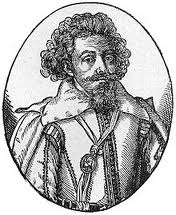 art of music is the greatest treasure in the world”), and there were many musicians working at the courts of German princes and margraves, but none of them were on the same level as the great composers of Flanders or Italy. That is, till Michael Praetorius who was born Michael Schultze (Praetorius is the Latinized version of his family name, which means “judge”) in Creuzburg, on February 15th of 1571. Creuzburg, a small town in Thuringia, lies less than six miles away from Eisenach, where Luther translated the Bible into German and where Bach was born in 1675. In 1573 the family moved to Torgau, Saxony, where Michael took musical classes from a local cantor. He went to the University of Frankfurt an der Oder and later attended a Latin School in Zerbst. Even though we know nothing about his musical education, clearly he was studying music, as sometime around 1587, when Praetorius was 16, he was appointed organist at Marienkirche, the oldest in Frankfurt. An interesting story is related to the church: it had famous gothic stained glass windows with 117 different images, created around 1360. In the middle of WWII the windows were removed and stored for protection in the Sanssouci palace in Potsdam. After the war, together with so much other loot, the windows were sent to Russia and disappeared there without a trace. They resurfaced 1997 in the storage of the Hermitage. Surprisingly, the Russian government agreed to return them to Germany, one of the very few pieces of art that ever were.
art of music is the greatest treasure in the world”), and there were many musicians working at the courts of German princes and margraves, but none of them were on the same level as the great composers of Flanders or Italy. That is, till Michael Praetorius who was born Michael Schultze (Praetorius is the Latinized version of his family name, which means “judge”) in Creuzburg, on February 15th of 1571. Creuzburg, a small town in Thuringia, lies less than six miles away from Eisenach, where Luther translated the Bible into German and where Bach was born in 1675. In 1573 the family moved to Torgau, Saxony, where Michael took musical classes from a local cantor. He went to the University of Frankfurt an der Oder and later attended a Latin School in Zerbst. Even though we know nothing about his musical education, clearly he was studying music, as sometime around 1587, when Praetorius was 16, he was appointed organist at Marienkirche, the oldest in Frankfurt. An interesting story is related to the church: it had famous gothic stained glass windows with 117 different images, created around 1360. In the middle of WWII the windows were removed and stored for protection in the Sanssouci palace in Potsdam. After the war, together with so much other loot, the windows were sent to Russia and disappeared there without a trace. They resurfaced 1997 in the storage of the Hermitage. Surprisingly, the Russian government agreed to return them to Germany, one of the very few pieces of art that ever were.
Sometime around 1595 Praetorius entered the service of Duke Heinrich Julius of Brunswick-Wolfenbütte. The Duke was interested in arts (although he also enjoyed persecuting Jews and witches); he even invited John Dowland, the famous English composer, to Wolfenbütte to meet with Praetorius. It seems that the Duke was very fond of Praetorius as he took him along on many of his journeys, to Prague, for example, to the court at Hesse and many other places. These travels helped to spread Praetorius’s fame: in 1613, when the Duke died, Praetorius was immediately invited by the Elector Johann Georg of Saxony to Dresden, to become a deputy to the Kapellmeister. The court of the Elector was one of the finest in all of Germany; there Praetorius met the younger Heinrich Schütz and also many Italian musicians, who strongly affected his musical style. His duties in Dresden were over by 1616, but by then Praetorius was the most famous composer in Germany and was receiving invitations from all over the land\. We know that he worked as the Kapellmeister in Magdeburg, then was invited by the Landgrave Moritz of Hesse, a great lover of music, to Kassel. He also worked in Leipzig, Nuremberg and Bayreuth. The last years of his life he suffered of ill health; Praetorius returned to Wolfenbüttel in 1620 and died there on February 15th of 1621.
Praetorius was phenomenally productive. He compiled twelve hundred chorales into nine volumes he titled Musae Sioniae and more than 300 dances into a collection called Terpsichore. Praetorius, who spoke several languages and was one of the most learned musicians of his generation, also wrote a number of theoretical treaties on music. Here’s one of his earlier hymns, Puer natus in Bethlehem. Huelgas Enselmble is conducted by Paul van Nevel. And here’s an excerpt from one of his last compositions, Wachet auf, ruft uns die Stimme (Awake, calls the voice to us), the first section of his collection Polyhymnia Caduceatrix & Panegyrica. You can clearly hear Italian influences. Musica Fiata and La Capella Ducale are conducted by Robert Wilson.Permalink
February 8, 2016. Mendelssohn. Last week we missed Felix Mendelssohn’s birthday: he was born on February 3rd of 1809. Mendelssohn is of course famous as one of the foremost romantic composers of the 19th century, but he also brought back to life one of greatest masterpieces of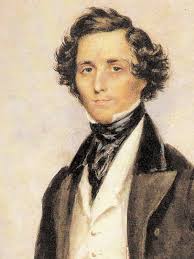 Johann Sebastian Bach, The St. Matthew Passion. This episode is interesting as it also sheds light on the life of the emancipated German Jewry in the early 19th century. The St. Matthew Passion was first performed in April of 1727 in the St. Thomas Church in Leipzig where Bach served as a Kapellmeister. It was then performed there several times during Bach’s life time. After Bach’s death in 1750, the Passion was played occasionally in the Thomaskirche but never outside of Leipzig. Then around 1800 all performances stopped. It doesn’t mean that the work was completely forgotten: the scores of the Passion were in circulation and musicians could study them. One of such enthusiasts was the composer Carl Friedrich Zelter, Felix’s music teacher. Zelter was the head of Sing-Akademie, Berlin’s choral society; he was very fond of Bach but thought the Passion to be way too complex (and long) to be performed in public. Nonetheless, parts of the Passion were being rehearsed by members of Sing-Akademie, some of these rehearsals taking place in Zelter’s home; that’s where Felix heard them for the first time. Members of Sing-Akademie came mostly from Berlin’s haut bourgeoisie but prominent Jewish families were also part of it almost from the beginning. Several members of the Mendelssohn family belonged to Sing-Akademie and so did the Itzigs, descendants of Daniel Itzig, the banker to Frederick the Great of Prussia. Bella Solomon, Daniel Itzig’s daughter, and Felix’s grandmother, sung in the Akademie. When Felix was 14, Bella Solomon presented him with a copy of the Passion’s score. It’s interesting to note that Bella, who sung all those Lutheran hymns at the Sing-Akademie, was herself a religious Jew. The young Felix was not: his father renounced the religion and Felix and his siblings didn’t have a religious education. At the age of seven he was baptized. Bella didn’t know about it till much later and clearly not when she presented Felix with Bach’s score.
Johann Sebastian Bach, The St. Matthew Passion. This episode is interesting as it also sheds light on the life of the emancipated German Jewry in the early 19th century. The St. Matthew Passion was first performed in April of 1727 in the St. Thomas Church in Leipzig where Bach served as a Kapellmeister. It was then performed there several times during Bach’s life time. After Bach’s death in 1750, the Passion was played occasionally in the Thomaskirche but never outside of Leipzig. Then around 1800 all performances stopped. It doesn’t mean that the work was completely forgotten: the scores of the Passion were in circulation and musicians could study them. One of such enthusiasts was the composer Carl Friedrich Zelter, Felix’s music teacher. Zelter was the head of Sing-Akademie, Berlin’s choral society; he was very fond of Bach but thought the Passion to be way too complex (and long) to be performed in public. Nonetheless, parts of the Passion were being rehearsed by members of Sing-Akademie, some of these rehearsals taking place in Zelter’s home; that’s where Felix heard them for the first time. Members of Sing-Akademie came mostly from Berlin’s haut bourgeoisie but prominent Jewish families were also part of it almost from the beginning. Several members of the Mendelssohn family belonged to Sing-Akademie and so did the Itzigs, descendants of Daniel Itzig, the banker to Frederick the Great of Prussia. Bella Solomon, Daniel Itzig’s daughter, and Felix’s grandmother, sung in the Akademie. When Felix was 14, Bella Solomon presented him with a copy of the Passion’s score. It’s interesting to note that Bella, who sung all those Lutheran hymns at the Sing-Akademie, was herself a religious Jew. The young Felix was not: his father renounced the religion and Felix and his siblings didn’t have a religious education. At the age of seven he was baptized. Bella didn’t know about it till much later and clearly not when she presented Felix with Bach’s score.
By 1829, the 20 year-old Felix was already an established composer. He had already written his first symphony, a highly successful Midsummer Night's Dream Overture Op.21, which was completed when Felix was 17 and a half years old; several piano and string quartets, a violin sonata and a large number of songs. He was also preoccupied with the idea of performing The St. Matthew Passion. He had started private rehearsals of the Passion sometime earlier, enlisting a small group of singers whom he accompanied on the piano. The difficulty of the piece seemed insurmountable but Eduard Devrient, his good friend, a singer and theater director, was enthusiastic and very encouraging. It was Devrient who suggested that they perform the Passion at the Sing-Akademie with Mendelssohn himself conducting (Mendelssohn had never before conducted anything even close to the complexity of Bach’s work). The performance took place in March of 1829 and was a tremendous success. The second performance was scheduled right away, to take place on March 21st, Bach’s birthday. Even that was not enough, the public was craving more and a follow-up performance was set for the Good Friday which fell on April 17th of that year. As but that time Mendelssohn was on his way to London for a series of concerts, Zelter took over the conducting. These performances established the Passion as central to all European classical music repertoire, a position occupied by this masterpiece to this day. Later in his life Mendelssohn started composing an oratorio Christus, clearly influenced by Bach. He never finished it having died at the age of 38 after suffering several strokes. Here’s the first part of Christus; Anne Ackley is the soprano, with the Westminster Choir (Rider University) and New Jersey Symphony conducted by Joseph Flummerfelt. Permalink
February 1, 2015. Missed birthdays. Last week we celebrated Mozart’s 260th birthday and missed several important dates. Franz Schubert was born on January 31st of 1797. Composer of immense talent and a tragically short life, he left an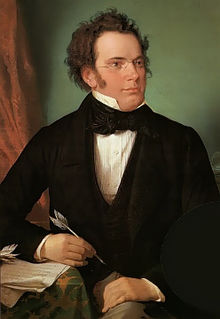 extraordinarily rich body of work: piano sonatas, last three of which have very few peers in all of the piano repertoire; nine symphonies; wonderful chamber music (one has to mention his “Death and the Maiden” quartet (no. 14), his “Trout” Quintet or the great String Quintet in C Major), sacred works, stage work (“Rosamunde,” for example) and much more. But one area where his genius shone the brightest was the Lied. Schubert’s songs pack a great amount of musical material and the broadest range of emotions into little gems that sometimes last less than two minutes. His song cycles Die schöne Müllerin, Winterreise, and Schwanengesang are, of course, incomparable, and so are some individual songs. Here are two, An Die Musik, D. 547, sung by the soprano Elisabeth Schwarzkopf with the great, but in this recording technically imprecise Swiss pianist Edwin Fischer (here), and Gretchen Am Spinnrade, with the flawless Kiri Te Kanawa and Richard Amner (here). Schubert was 17 when he composed Gretchen Am Spinnrade.
extraordinarily rich body of work: piano sonatas, last three of which have very few peers in all of the piano repertoire; nine symphonies; wonderful chamber music (one has to mention his “Death and the Maiden” quartet (no. 14), his “Trout” Quintet or the great String Quintet in C Major), sacred works, stage work (“Rosamunde,” for example) and much more. But one area where his genius shone the brightest was the Lied. Schubert’s songs pack a great amount of musical material and the broadest range of emotions into little gems that sometimes last less than two minutes. His song cycles Die schöne Müllerin, Winterreise, and Schwanengesang are, of course, incomparable, and so are some individual songs. Here are two, An Die Musik, D. 547, sung by the soprano Elisabeth Schwarzkopf with the great, but in this recording technically imprecise Swiss pianist Edwin Fischer (here), and Gretchen Am Spinnrade, with the flawless Kiri Te Kanawa and Richard Amner (here). Schubert was 17 when he composed Gretchen Am Spinnrade.
The Italian composer Luigi Nono was born on January 29th of 1924 in Venice. Nono studied at the Liceo Musicale with the noted composer Gian Francesco Malipiero and then with one of the first avant-garde Italians, Bruno Maderna. Several early works by Nono were presented in Darmstadt. Soon after he became an active participant and, together with Boulez and Stockhausen, one of the leaders of the movement. In 1955 he married Nuria Schoenberg, daughter of Arnold Schoenberg. Nono was a leftist, as were many of his fellow composers. A principled anti-fascist, he went much further left than that. For example, his opera Al gran sole carico d'amore, (the libretto for which he co-wrote with Yuri Lyubimov, the director of the original production and also the director of the famous Moscow Taganka theater), while based on the plays by Bertolt Brecht, also contained excerpts of speeches by Fidel Castro, Che Guevara, Karl Marx and Lenin. Some of the music composed during the 60s was extremely political and dogmatic. For example, his Non Consumiamo Marx consists of sounds recorded during the 1968 student uprising in Paris and a voice reading the messages left on the walls during that period. A much more interesting piece is his Prometeo, composed during several years in the early 1980s. It’s called “opera,” although the word should be taken in its original Italians sense, “work” – Prometeo is a composition for five singers, two speakers, a chorus and small orchestra. The sounds are supposed to be electronically manipulated. Here’s a suite from Prometeo, performed live in Lucerne on August 20th of 2005. Claudio Abbado is conducting.
One great composer was born this week: Felix Mendelssohn, on February 3rd of 1809. Even though we’ve written about him many times, we’ll dedicate an entry to him at a later date.Permalink